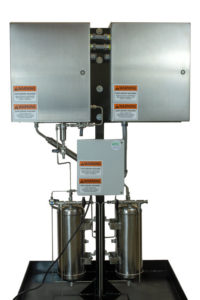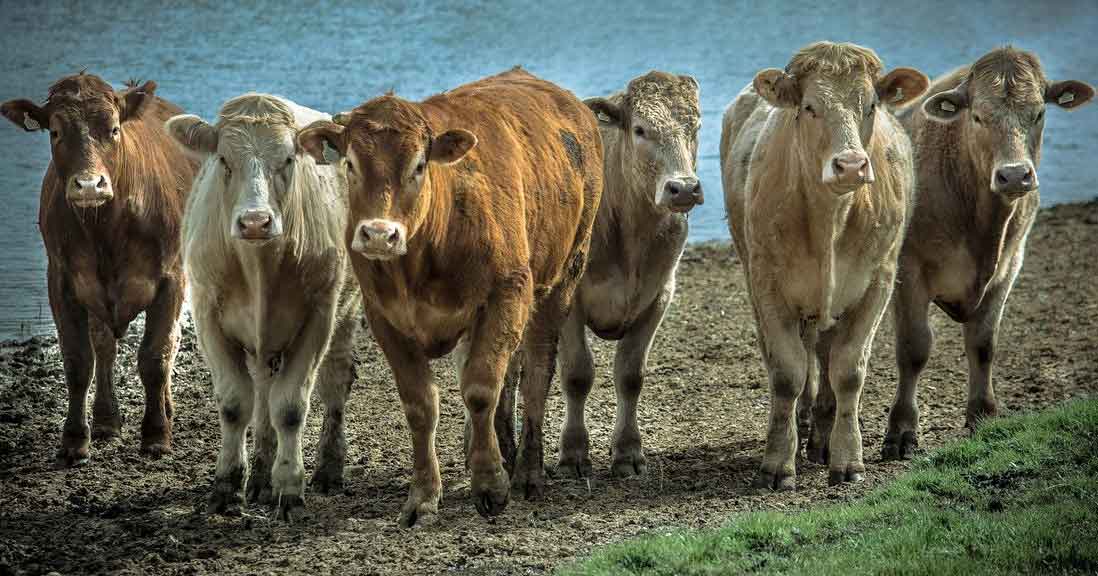There are two categories for natural gas odorization equipment, chemical vaporization or chemical injection. This article will discuss the vaporization type.
Vaporization Equipment
Examples of vaporization systems are wick-type odorizers and bypass-type odorizers. Both these systems are simple to use. However, they are only suitable for low flow and consistent flow applications. Whereas injection-style odorizers directly introduce the odorant into the gas stream and may be used in a wide range of flow rates.

Pictured is a training unit of the GPL 750 odorizer. This odorizer is an example of a chemical injection-style unit, offering portability and provides a full training experience for the employees to learn how the system operates and how to maintain it.
Wick-Type Odorizers
A Wick-style odorizer is one of the oldest types of odorization equipment. It is straightforward, inexpensive, and easy to use. It is perhaps the only way to odorize a single customer and is known as the “farm tap” odorizer. They are usually small, and the odorant is contained in a small bottle and installed on the service line near the gas meter. A cotton wick is inserted into the odorant and is saturated. The opposite end of the wick extends into the gas stream. The odorant draws up the wick and evaporates into the gas. Setting the dosage on this style of odorizer is performed by varying the wick size. The wick-type odorizer is only useful for odorizing individual lines such as a farm tap. The odorant usually recommended for wick odorizers is thiophane, which smells different than mercaptan. For this reason, at times when the town uses mercaptan in their distribution system, a diluted mercaptan may be utilized.
Disadvantages
The drawbacks of wick-type odorizers are that the gas can be over-odorized during the summer when gas flow is low. Alternatively, in high-flow applications, the gas can be under-odorized and not detectable. This system has no flow tracking ability like the injection systems, and it is hard to monitor periodically. Wick odorizers are also susceptible to liquid contamination, and other particulate contaminants can prevent the wick from drawing up the odorant and evaporating.
Bypass Odorization
The bypass odorizer is also a simple and inexpensive method for a small system used today. In this process, a portion of a gas stream diverts to a tank that contains liquid odorant. Most of these systems even include wicks to increase vaporization. The amount of gas diverted is dependent on the flow in the pipeline. The diverted gas flows on top of the odorant and leaves the tank saturated, returning to the gas pipeline, thus odorizing it.
Disadvantages
While these systems are easy to fill, easy to install and replace, they also have significant disadvantages. When flow widely varies, the odorizer will not track flow; therefore, the odorization is not accurate. Liquid contamination also hinders the evaporative process. If water is a contaminant, even at 0.5% (by volume), and temperatures fall below freezing, the odorizer will stop working. These odorizers also need to have their sight glass checked every month. While it is easy to refill the tank with the odorant, a significant amount of odorized gas releases into the atmosphere during each refill.
As injection-type odorizers become more cost-effective to service smaller systems, the bypass odorizer will become obsolete.
Variations of Evaporation Systems
Due to the disadvantages of the vaporization or evaporation odorization systems, manufacturers have introduced mutations. A couple worthy of mention:
Pitot Tubes
One manufacturer created a design similar to the wick-odorizer with two pitot tubes instead of the wick. This model performed well in the summer months, though it failed in temperatures below freezing.
Pulse Bypass Odorizers
The bypass odorizer was modified to permit tracking natural gas flow. In this case, the higher pressure gas from a transmission line is used to introduce odorant vapors into a lower pressure distribution line. By diverting non-odorized natural gas through an odorant tank, the saturated gas returns to a downstream distribution line. This style is suitable for lower volume applications, and while it is more expensive than the traditional bypass, it offers cost incentives versus feature-rich injection systems.
In our next post, we share information on chemical odorant injection odorization.
FAQ
What is odorization of natural gas?
Natural gas odorization is the process of injecting an odorant into a gas stream by an odorizer or odorant injection equipment. The purpose, of course, is to make the gas smell so that it can be detected, because, in its natural state, natural gas is odorless.
What do they put in propane to make it smell?
Propane (LPG or LP Gas) is colorless, odorless, and flammable gas under normal conditions. The most common odorant added to propane is ethyl mercaptan.
What scent is added to natural gas?
Natural gas is odorized with an odorant which is typically a blend of various organosulfur or non-sulfur compounds to make it smell like rotten eggs or hydrogen sulfide.
Why does natural gas smell so bad?
That nasty, rotten-egg smell commonly associated with natural gas is added to gas so that people can detect it and take the appropriate action, which may include leaving the area and calling 911.
-
[…] measure since it is combustible and odorless. We also discuss that odorant is introduced by either chemical vaporization or chemical injection. We further share the advantages and disadvantages of various odorization […]
Leave a Comment


Greetings! I have a farm tap type gas well. Can I buy odorant for my wick type odorizer by itself, or do you buy the entire canister? In either case, do you sell these items? Thank you!
Hi Dean! We do not sell odorant for odorizers. I suggest you check out King Tool. Thanks
OK thank you!!!
Dear Sir/Madam,
We need Bypass Odorization System. Please provide your contact details (name, e-mail id and contact number) so that can send you the enquiry.
Regards
Nayakar(Mr)
Director – Sales & Marketing
TechSep Process Engineering
Hi, Nayakar. We do not manufacture bypass systems, only odorant injection systems. I suggest you connect with either Welker or Preco. You can get contact information on https://www.gasodorizer.com/leading-u-s-natural-gas-odorizer-manufacturers/
We need bypass odourisers 20 liter capacity and 5-7 ppm with gas pressures ranging from 150 to 300 psig. pls quote to kumar@offshore-engineering.in
Thanks for the visit. We do not manufacture bypass odorizers. Check out – https://www.gasodorizer.com/best-odorant-injection-system-odorizer-odorization/ or call King Tool (903) 759-4478. Thanks!